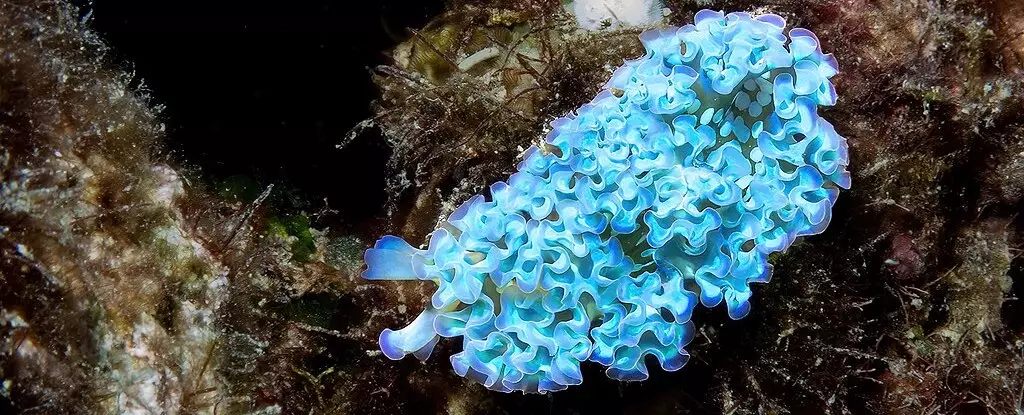At first glance, the lettuce sea slug, scientifically known as Elysia crispata, might bemuse onlookers with its peculiar appearance, reminiscent of an otherworldly entity rather than a garden-variety culinary delight. However, this seemingly bizarre creature illustrates one of the most extraordinary tactics in the kingdom of life: a biological heist. The implications of the slug’s ability to commandeer the cellular machinery of algae highlight an intricate interplay of evolution, survival, and ecological symbiosis that prompts a profound reevaluation of how we perceive life forms and their interactions.
The Art of Biological Theft
Elysia crispata’s modus operandi is nothing short of fascinating. Instead of merely consuming the algae for sustenance, this clever slug transcends traditional dining. It selectively nabbs the chloroplasts—tiny structures in algae responsible for photosynthesis—capturing them intact. This phenomenon known as “kleptoplasty” gives rise to the mind-bending image of the lettuce sea slug functioning as a kind of biological thief, collecting living machinery that allows it to harness solar energy much like plants do. The argument follows that such a process isn’t merely coincidental; it’s a sophisticated adaptation allowing the slug to thrive in environments where food sources are sparse.
Yet, this raises a critical question: what ethical considerations should we apply to organisms acting against the assumed boundaries of nature? Life, it seems, is not merely a series of struggles for survival but a complex tapestry woven through cooperation, competition, and even theft. The lettuce sea slug has shown us that life can blur these lines in ways that defy simplistic categorization and challenge our preconceived notions about individuality in the natural world.
Symbiotic Relationships Redefined
The latest studies from Harvard have uncovered the nuanced biology of how Elysia crispata maintains these stolen chloroplasts, now dubbed “kleptosomes.” Through cellular ingenuity, the slug encases the chloroplasts in membranes, essentially creating a living solar panel that allows it to photosynthesize. This revelation not only illustrates a remarkable adaptation but also hints at the complex interdependencies that define life on Earth. Such interactions compel us to rethink our understanding of ecosystems: individuals can embody characteristics of other species, leading to an amalgamation of biological traits that enrich biodiversity.
Furthermore, the varied coloration of the lettuce sea slug—green when well-fed and orange during food scarcity—could indicate a direct relationship between health and appearance. This observation provokes further contemplation about the ecological hierarchies and the survival tactics an organism might employ in fluctuating environments. It is a reminder that nature operates in shades far more complex than good or bad, successful or unsuccessful.
A Broader Perspective on Evolution
The research into the lettuce sea slug opens exciting avenues for understanding the evolutionary processes at play in our world. Kleptoplasts pose an evolutionary riddle: could they represent a transitional phase that hints at greater symbiotic relationships? It’s a compelling reflection on how adaptability and resourcefulness could steer the course of evolutionary development. The relationship between the slug and its seized chloroplasts suggests a model far richer than mere competition; it prompts an exploration into how life emerges through collaboration, theft, and alliance.
This is not merely about a slug stealing energy; it serves as a powerful metaphor for human existence today, as societies compete for resources, ideas, and innovations. Perhaps we should look to nature for insights into cooperative evolution—a principle that seems especially relevant amidst global challenges that necessitate unity over competition. Are we capable of learning from the lettuce sea slug, fostering more symbiotic relationships in our own struggle for survival on a planet teeming with life?
As studies continue to unpack these phenomena, we remain on the threshold of capabilities previously deemed impossible. Understanding organisms like the lettuce sea slug not only satisfies our curiosity about the biological world but also provides insights applicable across many dimensions of life and human society. We should reflect deeply on how we engage with our environment and each other, exploring an ethos of mutual benefit rather than unilateral gain. In doing so, we could pave the way for a future grounded in cooperation, much like the thriving relationships exhibited in diverse ecosystems.


Leave a Reply